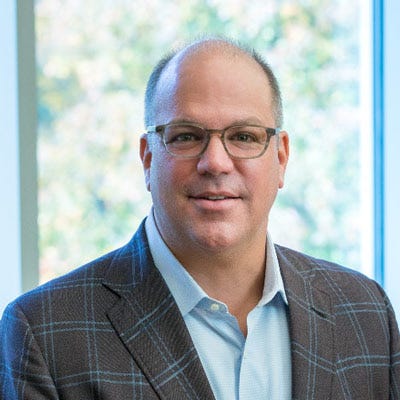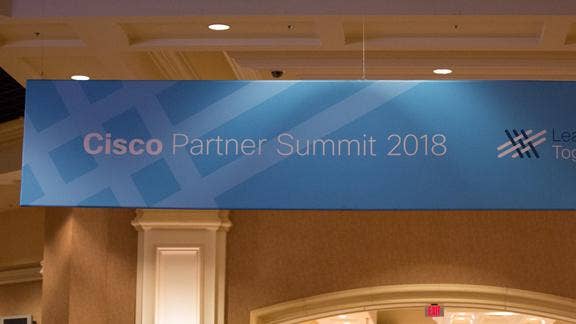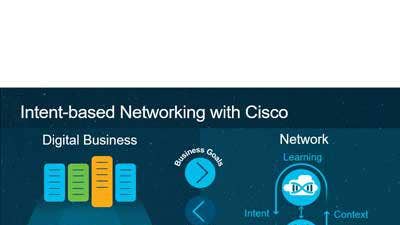Cisco Partner Summit Preview: Americas Sales Chief Sharritts On SD-WAN, And Stoking Software Growth
Cisco Americas Sales Chief Jeff Sharritts is counting on partners to go all-in with a software-centered, lifecycle-focused strategy to sell across the company's product portfolio and put Cisco a step ahead of a rapidly changing market.

Sales Leader
Jeff Sharritts, Cisco's Americas sales chief, is clearly prioritizing the channel as he remakes his organization to drive the networking giant's transformation into a software, subscription and recurring revenue-focused strategy.
Sharritts was named to the top Americas sales job last June. The 19-year Cisco veteran came up through the company's partner organization and he's got a clear message for solution providers headed into the company's massive Partner Summit in Las Vegas this week: He's counting on partners to go all-in with a software-centered, lifecycle-focused strategy to sell across the company's product portfolio and put Cisco a step ahead of a rapidly changing market.
"We're absolutely committed to working with partners through this transformation that we're working through,"Sharritts told CRN. "We're going to do it together, and we're going to get it right together. We have a history as a company of doing it right with our partners. It doesn't mean we're always perfect. We always have room to improve. But I think we've done a good job with the channel over the years and I think we understand the relevance and the value of our partners as the market changes. We're going to invest with them to get this right."
Sharritts, who took the top Americas sales job after longtime Cisco exec Allison Gleeson left the company, has also made sweeping changes to his Americas sales team to emphasize the drive toward subscriptions, recurring revenue and selling Cisco as a platform with open APIs partners can use to build and strengthen application development practices.
What follows is an edited excerpt of Sharritts' conversation with CRN.

What's your vision for Cisco's Americas sales organization, and what will that mean for partners?
Customer centricity is No. 1. A lot of people talk about that, and candidly, we've talked about that a lot at the company over the years. I do see some renewed focus on that here based on some of the new alignment inside the company and some of the new executives that have joined the company who are really changing the way we think about our customer sand the way we really leverage the outside-in information to really change what we're doing inside the company. We're laser-focused on the five key priorities for the company: Multi-cloud, reinventing networking, unlocking the power of data, security and creating meaningful experiences for customers. One of my priorities is about the channel and our partners. In the Americas, 90 percent, 90-plus percent of our business flows through our partners. We're heavily committed to the channel to drive our business across the Americas. When you think of the holistic experience our customers want from our technology and our innovation, it's going to require the channel to help us deliver that. We're not building out capabilities at scale to deliver value-added services and support models that are going to be required as this market continues to change and evolve. Our commitment to the channel has never been stronger. We've seen some companies in the software world over the last 10 years that maybe haven't played this thing right, and I think we're learning from the mistakes that some of our peers in the industry made where they lost their value-added channel. We want to make sure we don't make those mistakes in how we shift our investments and how we shift our programs. We want to make sure we get it right by working with our partners.

What are the key opportunities for partners over the next year or two?
No. 1, and where we need the most help, is how do we truly build out these lifecycle capabilities that are needed in the managed service, SaaS-based world that we're moving to. It's a journey, but there are going to be huge opportunities for our partners to play a key role in our go-to-market. The other one is how we start to leverage the open software platforms we're building across all five of the pillars I just talked about. With those open APIs, how do partners leverage their application development capabilities, or build out application development capabilities to pull data out of our infrastructure to create new applications or improve business processes for customers. How do they build on top of an industry or vertical-relevant application to bring new value to the businesses? We're on a journey and we're investing in training, practice develop, incentives to make sure we bring our partners along on this journey.

How far along the road to becoming a software-centric organization is your sales team?
We're still at the front end of a lot of the transition we're going through as a company. The development of our team and how we extend that into the channel is important. The first piece of that is how we position up-front. It's not just about 'land' anymore. It's about how we sell the value of the software and how we add value, and the ongoing value of the software. Certainly there's a transaction piece of that, and then there's enacting the lifecycle piece. We've done a lot of training of our teams around helping them to understand this new selling motion that we're undertaking with our clients. Like any transformation, you have a percentage of the teams that embrace it quickly and get it, you have a percentage of the team that's learning and continuing to develop, and then you have a percentage of the team that over time will probably find something else to do because they won't embrace the change as the market continues to evolve. We're trying to take all of that development and enablement effort and extend it to our channel so we can align and continue to go to market and shift our investments to support the transition.

You've got a bunch of partners that have already been selling software and lifecycle management. How big a role do they play in pushing Cisco's strategy or helping set that strategy for the future?
They're helping us in many ways with some of the things we need to be thinking about and doing, and how we evolve some of our programs to make sure we get it right. That's first and foremost. They're making sure we don't make some of the mistakes that some others in the industry have made. It's an 'and' game. The unique thing about leading this team right now is turning the dials and turning the right dials at the right time. It's incredibly important. We still have to run a business for today, and so do our partners. And we have to build out new capabilities for this transition that's happening in the marketplace. How we get that balance right and make sure we don't over-rotate with our programs and incentives and rebates while pushing our partners to continue to move is going to be incredibly important. This is a multi-year journey. It's not going to flip overnight.

What's your thinking around your Americas team? What changes do you anticipate making over the next couple of years?
My leadership team has already changed quite a bit. Of my top 17 leaders in the Americas, 12 are brand new starting this year. That's been really healthy for our teams. Most of it has been through natural, internal movement where we've rotated people into new roles and jobs. It's given me the opportunity to put some new skill sets on the team that come from where we need to go with a good balance of where we've been so we can make sure we're pulling the right levers from an enablement perspective, from an operational perspective, from an incentives perspective and a programs perspective. It's important for us to get the right balance of skill sets on the team. We've done things a certain way for a long time, but we also have to embrace new thinking and new ways of doing things. The opportunity I've had to change out and rotate some people through the organization has allowed me to bring some new skill sets to the team.

What do you want partners to walk away from Partner Summit with?
What you're going to hear loud and clear is that we're absolutely committed to working with partners through this transformation that we're working through. We're going to do it together, and we're going to get it right together. We have a history as a company of doing it right with our partners. It doesn't mean we're always perfect. We always have room to improve. But I think we've done a good job with the channel over the years and I think we understand the relevance and the value of our partners as the market changes. We're going to invest with them to get this right. I want them to walk away with excitement around the innovation engine that cranking inside the company right now. I feel really good about where we're at from a development perspective. You're going to see a lot of innovation and products being launched that our teams and our partners are going to be excited about. They require a lot of the service capabilities that our partner bring to truly be successful.

What's your strategy for the SD-WAN market? What are your partners seeing there?
The market is still very fragmented. We acquired a leading platform in the industry and we've done a lot of work around driving innovation and integration into ISRs. Depending on the stats, 60-plus percent of our customers are going to be making an SD-WAN decision over the next 12-18 months. When you look at growth priorities for us in the Americas, it is an absolute top priority for us. The reason is it's top of mind for customers. In this world, you need a smart, cost-effective WAN architecture with security embedded and that's what we're building. With customers, we're still seeing lots of proof-of-concepts, lots of proof-of-values. We're seeing some of those come to fruition where customers have made a decision and are starting to move. Large global customers are starting to really move aggressively. We're starting to see customers moving forward aggressively with implementing solutions and our partners are moving right along with them. SPs are delivering managed service offerings. Other partners are scaling their practices in this area, as well.

The intent-based networking portfolio has been very successful. Why are customers choosing to go in that direction? What have you seen from them over the last few months?
I was with a health care customer and they just made the comment to me that today they have 1,500 or 1,700 connected things within the health care system, it’s a medium-size health care system, and they're anticipating that moving to almost 10,000 connected things in their environment. What they realized, and what we realized, was that the way we built networks in the past isn't going to support at scale the number of new connections our customers are going to see and that are going to exist in the marketplace. Ultimately, our customers are realizing that and they're embracing Meraki in the midmarket and down, or DNA Center as you move further up the market. They're embracing a more automated, simpler platform to allow them to onboard all these new connections and devices they're going to see over the next several years and simplify how they run their networks.